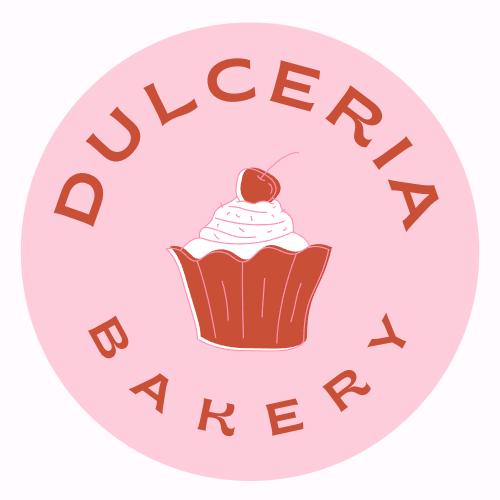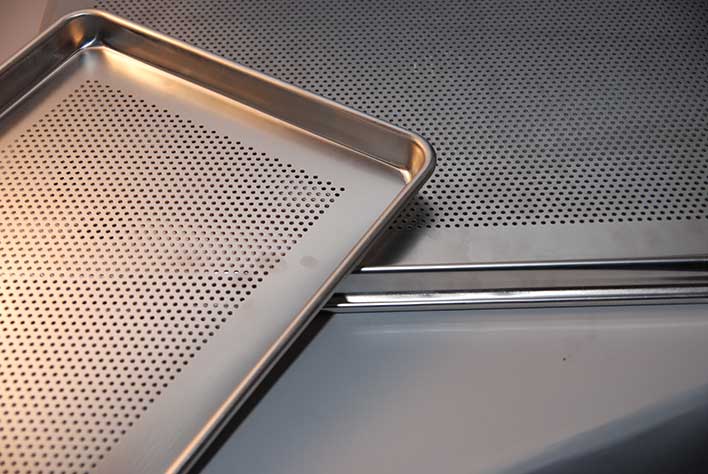A perforated baking sheet is a type of baking sheet that has small holes or perforations on its surface. These holes allow air to circulate more freely around the food being baked, which can result in a crispier and more evenly cooked product.
Perforated baking sheets are typically made from materials such as aluminum, stainless steel, or carbon steel, and come in a variety of sizes and shapes to accommodate different types of baking needs. They are commonly used for baking breads, pastries, pizzas, and other baked goods that benefit from a crispy crust.
Perforated baking sheets can be used in both home and commercial kitchens and are often preferred by professional bakers and chefs for their ability to produce high-quality baked goods. They are also relatively easy to clean and maintain, making them a convenient and practical choice for many baking applications.
What are perforated baking sheets used for?
Perforated baking sheets are primarily used for baking bread, pastries, and other baked goods that require a crisp crust. The holes on the surface of the sheet allow for better air circulation, which can result in a more evenly baked product with a crispy exterior.
Perforated baking sheets are commonly used to bake:
- Bread: The perforations allow the bread to bake more evenly and produce a crisp crust.
- Pastries: The perforations help to prevent the pastry from becoming soggy by allowing excess moisture to escape.
- Pizza: Perforated baking sheets are often used to bake pizza because they help to produce a crispy crust.
- French Fries: The holes allow for air circulation which helps to produce crispy fries.
- Vegetables: Perforated baking sheets are also used for roasting vegetables, as they allow for better air circulation which results in crispier and more evenly roasted vegetables.
Overall, perforated baking sheets are a versatile and useful tool for any kitchen, particularly for those who love to bake and want to achieve a professional-level crust on their baked goods.
Why should you use perforated baking sheet?
There are several reasons why you should consider using a perforated baking sheet for certain types of baking:
- Crispier crust: Perforated baking sheets allow for better air circulation, which can result in a crispier crust on baked goods such as bread, pastries, and pizza.
- Even baking: The perforations on the baking sheet allow heat to reach the food more evenly, which can result in more consistent baking and less hot spots.
- Reduced sogginess: The holes on the surface of the sheet allow excess moisture to escape, which can prevent the food from becoming soggy or steamed.
- Healthier cooking: The holes on the sheet allow excess oil and fat to drain away, resulting in a healthier final product.
- Versatility: Perforated baking sheets can be used for a variety of different types of baking, from bread and pastries to vegetables and French fries.
Overall, using a perforated baking sheet can help you achieve better results in your baking and cooking, particularly for items that require a crisp crust or even baking. They are also a versatile and useful tool to have in any kitchen.
How to use perforated baking sheet
Using a perforated baking sheet is very similar to using a regular baking sheet, but there are a few key things to keep in mind:
- Preheat your oven: It’s important to preheat your oven before using a perforated baking sheet to ensure even cooking.
- Use parchment paper or a silicone baking mat: Perforated baking sheets can be a bit trickier to clean than regular baking sheets, so consider using parchment paper or a silicone baking mat to prevent sticking and make cleanup easier.
- Use the right temperature and cooking time: The increased air circulation on a perforated baking sheet can cause food to cook faster than on a regular baking sheet, so make sure to adjust your temperature and cooking time accordingly.
- Don’t overcrowd the sheet: It’s important to leave space between items on a perforated baking sheet to allow for proper air circulation.
- Monitor your food closely: Keep an eye on your food while it’s baking to ensure that it doesn’t become overcooked or burn.
- Use oven mitts: As with any baking sheet, be sure to use oven mitts or pot holders when removing the sheet from the oven, as it will be very hot.
Overall, using a perforated baking sheet is fairly straightforward, but it’s important to keep these tips in mind to ensure that you get the best results.
How do you clean perforated baking sheets?
Cleaning perforated baking sheets can be a bit trickier than cleaning regular baking sheets, but there are several methods you can use:
- Scrape off any food debris: After using the perforated baking sheet, use a spatula or scraper to remove any food debris or residue that may be stuck to the surface of the sheet.
- Soak in hot, soapy water: Fill your sink or a large basin with hot, soapy water and allow the perforated baking sheet to soak for several minutes. This will help to loosen any remaining food debris.
- Use a non-abrasive scrubber: After soaking, use a non-abrasive scrubber or sponge to gently scrub the surface of the sheet. Avoid using steel wool or other abrasive materials, as these can scratch the surface of the sheet.
- Rinse thoroughly: Rinse the perforated baking sheet with hot water to remove any remaining soap residue.
- Dry completely: Once the perforated baking sheet is clean, dry it thoroughly with a clean towel or allow it to air dry before storing.
If there are stubborn stains or burnt-on food debris, you can also try using a baking soda and water paste or a vinegar and baking soda solution to help remove them. Simply apply the paste or solution to the affected area, allow it to sit for several minutes, and then rinse and scrub as usual.
How long does it take to use perforated baking sheet?
There is no set time limit for using a perforated baking sheet, as it can be used for various recipes and cooking times depending on what you are baking or cooking. Typically, the length of time you use a perforated baking sheet will depend on the recipe or food you are cooking, as well as the temperature and cooking time specified in the recipe.
For example, if you are making pizza, you might use a perforated baking sheet to ensure that the crust is crispy and evenly baked. The cooking time for the pizza would depend on the recipe and the desired level of doneness. Alternatively, if you are using a perforated baking sheet to roast vegetables, the cooking time may be longer, again depending on the recipe and the desired level of doneness.
Ultimately, the length of time you use a perforated baking sheet will depend on the specific recipe and cooking instructions you are following. It’s important to keep an eye on your food while it’s cooking to ensure that it doesn’t overcook or burn.
Tips for using perforated baking sheet
Here are some tips for using perforated baking sheets:
- Use a baking spray or oil: To prevent food from sticking to the perforated baking sheet, consider using a baking spray or lightly coating the surface of the sheet with oil before placing food on it.
- Use the right temperature and cooking time: Because perforated baking sheets allow for better air circulation, they can cause food to cook faster than on a regular baking sheet. Make sure to adjust your temperature and cooking time accordingly.
- Don’t overcrowd the sheet: Leave space between items on a perforated baking sheet to allow for proper air circulation. Overcrowding can result in uneven cooking or soggy food.
- Use parchment paper or a silicone baking mat: If you’re worried about food sticking to the perforated baking sheet or want to make cleanup easier, consider using parchment paper or a silicone baking mat.
- Use a cooling rack: After baking, place your perforated baking sheet on a cooling rack to allow air to circulate around the food and prevent it from becoming soggy.
- Experiment with different foods: Perforated baking sheets are a versatile tool that can be used for a variety of foods, so don’t be afraid to experiment with different recipes and ingredients.
Overall, using a perforated baking sheet can help you achieve better results in your baking and cooking, particularly for items that require a crisp crust or even baking. With these tips, you can use your perforated baking sheet to create delicious and professional-quality baked goods.
Related Posts
What is roasting tin with rack used for?
Disclaimer: There are affiliate links in this post. At no...
Read MoreWhat is a glass casserole dish used for?
Disclaimer: There are affiliate links in this post. At no...
Read MoreWhat is air fryer baking sheet?
Disclaimer: There are affiliate links in this post. At no...
Read MoreWhat is toaster oven cookie sheet?
Disclaimer: There are affiliate links in this post. At no...
Read MoreWhy Trust Us
You will find what you are looking for at dulceriabakery. From classic to luxury brands, you'll find both. We will help you to select appliances that fit your needs, budget and lifestyle. Whether you want to stop by to learn more — or plan to make a major purchase — we’ll treat you like family and assist you every step of the way. Shop with us today to receive friendly and experienced help along the way.




